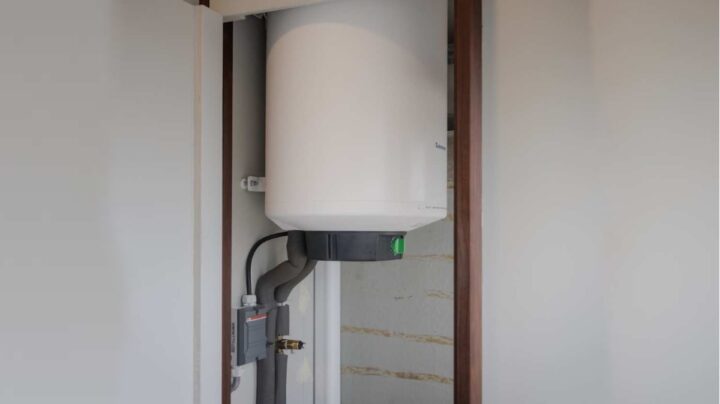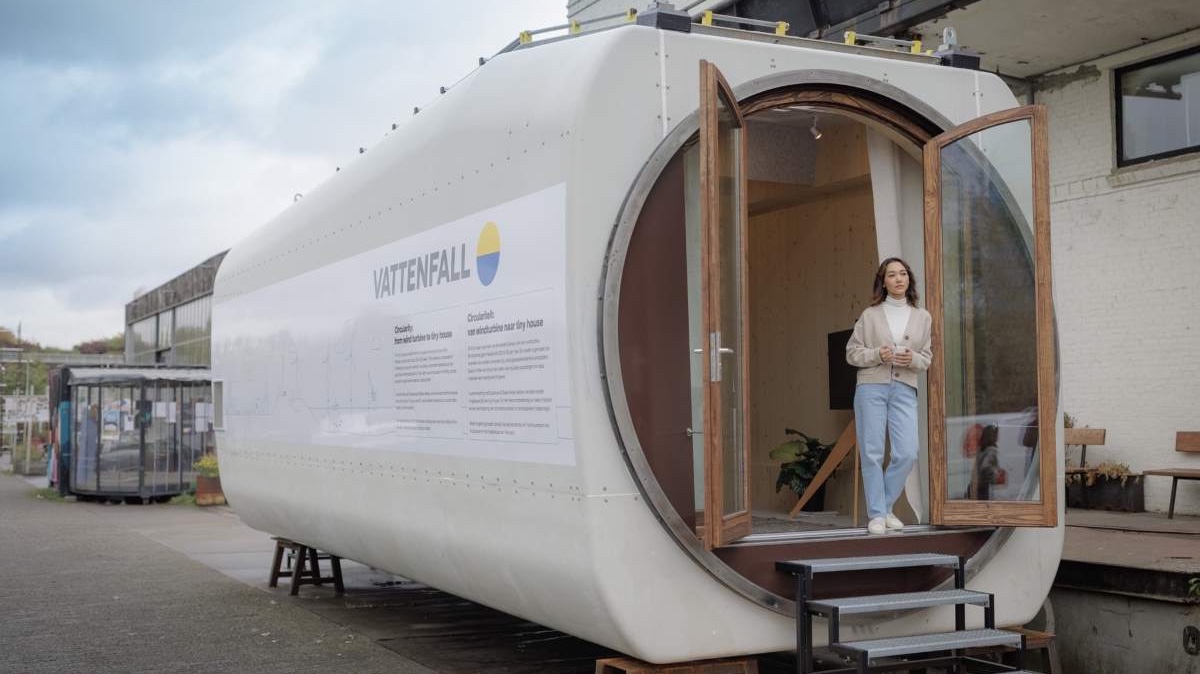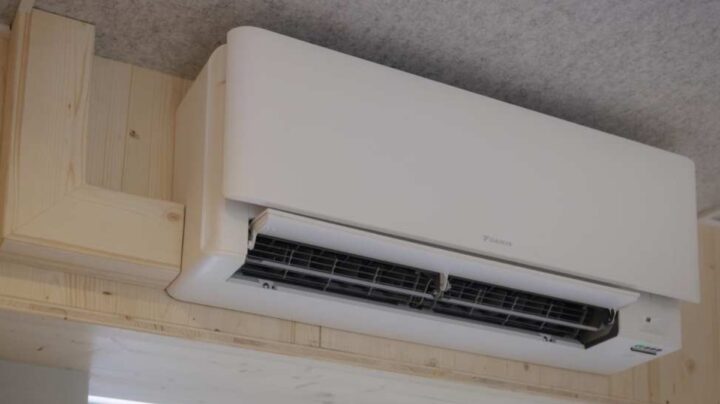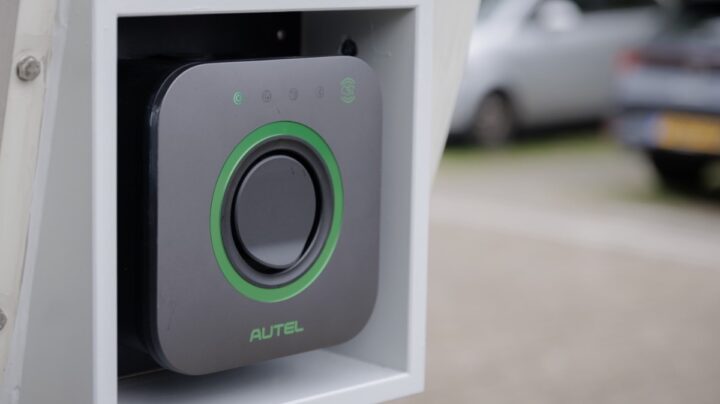Vattenfall, one of Europe's largest energy companies, based in Stockholm, has converted an old wind turbine into a fully functional and efficient tiny house. The house has a heat pump, solar panels and a solar water heater, which enhances energy efficiency.
Tiny house made of wind turbines
Energy company Vattenfallin collaboration with design studio Superuse, showcased an innovative tiny house at this year's Dutch Design Week. This project is a pioneering example of how the circular economy and sustainability can be integrated into everyday life.
A specific section of the turbine, the nacelle, or central cabin is used for the wind turbine. This unit was then carefully disassembled after completing its life cycle in Austria, where it operated for more than two decades.
with 4 meters wide, 10 meters long and 3 meters highThis industrial component has been converted into a fully functional residence.
The house has a kitchen, bathroom and living room, all compacted into the limited space of the old central cabin. Moreover, it has advanced technological features, such as a heat pump, solar panels and solar water heater, reinforcing its commitment to energy efficiency and reducing emissions.
this The project demonstrates how wind turbine components can be given a second life at the end of the operational cycleThis reduces the need for new materials and reduces the environmental impact of their disposal.
By recycling and reusing these components, Vattenfall not only extends the life of valuable materials, but also offers a more environmentally friendly solution to the challenges associated with dismantling these infrastructures.
Wind turbines: sustainable design challenges
The process of transforming the nacelle into a home was a challenge for both design studio Superuse and construction company Blade-Made, as they had to work in a limited space while adhering to building regulations.
Despite these limitations, The end result is a compact yet comfortable homewhich sets a new standard for sustainable living in small spaces.
Thousands of similar turbines are waiting to be decommissioned around the world. This project demonstrates the enormous potential to reuse these structures and create sustainable communities.
said Jos de Krieger, Partner at Superuse and Blade-Made, highlighting that the concept has great potential for scalability.
Interior design, circular economy and efficient energy consumption
The interior of the house is furnished by Reliving, a A platform that facilitates the buying and selling of used and antique furniture.
Through the use of recycled and sustainable materials, Reliving has created a welcoming environment that perfectly complements the unique architecture of the nacelle.
This collaboration between Vattenfall and Reliving highlights the importance of recycling not only in construction, but also in interior design, promoting a more environmentally conscious and responsible lifestyle.
Name those responsible for the project.
Home is Equipped with 4 solar panels on the roof with a maximum power of 1800 watts. Together, they generate enough power for the home.
Each panel has its own small inverter for 230V AC. In this way, the panels work independently of each other. If the panel fails, electricity will still be produced.
Another advantage is the fact that a large reflector is not necessary. Great, because the space is really “small”.

Showering, washing clothes, washing dishes... 50 liters of hot water is always enough.
Not all of the energy generated by solar panels is used immediately. With a solar boiler, solar energy is used to produce hot water. The installation consists of an electric boiler and a solar distributor.
This distributor ensures that excess solar energy is not returned to the grid, but is stored in the boiler.
Heating and cooling with air-to-air heat pump
This is often called air conditioning, but it is actually just a heat pump. This can keep your solar-powered home warm. Even with an outside temperature of at least -15°C.
An air to air heat pump is also a sustainable solution for cooling and heating standard homes.
Since the house is well insulated, ventilation is very important. In heat recovery (WTW) ventilation, used air is extracted and exactly the same amount of fresh air is returned.
Cold air from outside is heated by warm air from inside the house. In the house, a decentralized heat recovery system was used.
This applies to every room and avoids the installation of large ductwork, which is often a major undertaking.
Charging an electric or hybrid car
A home charging point of this type doesn't have to be big and flashy. Vattenfall's new compact home charging points are small and powerful, with Charging capacity up to 22 kW.
In the fan house, we move a little slower and the charging point is limited to 11 kW.
By insulating the nacelle, all layers are sealed, creating an almost airtight structure. In this way, the air exchange system can work perfectly with the decentralized heat recovery system.
Since the gondola has few large windows, the architects chose HR++ glass. Triple glazing has higher insulation value.
This tiny house project is just one of many innovative concepts that Vattenfall showcased during Dutch Design Week. Other projects include floating islands made of turbine blades and creating art installations that visualize data generated by wind turbines.
These initiatives underscore Vattenfall's commitment to a more sustainable future and serve as an inspiration for companies and other sectors to embrace circular economy principles.
Reusing wind turbines is not just limited to housing. Vattenfall is also exploring the possibility of converting other turbine components, such as blades, into new designs. Although shovels are difficult to recycle due to the composite materials from which they are made, they are being considered for use in building bridges, stadiums or even as key parts in innovative architectural structures.

“Wannabe internet buff. Future teen idol. Hardcore zombie guru. Gamer. Avid creator. Entrepreneur. Bacon ninja.”










